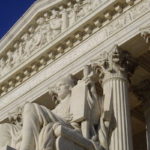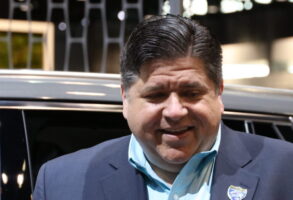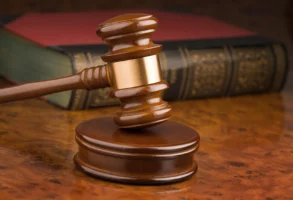
Published August 24, 2021
For anyone trying to understand how Chief Justice Roberts’s jurisprudential principles apply to the question whether he should vote in Dobbs v. Jackson Women’s Health Organization to overrule Roe v. Wade and Planned Parenthood v. Casey, the Chief’s concurring opinion in Citizens United v. FEC (2010) is essential—and, from the perspective of those of us urging overruling, very encouraging—reading.
In Citizens United, the Court, by a 5-to-4 vote, overruled its decision twenty years earlier in Austin v. Michigan Chamber of Commerce that the First Amendment allows political speech to be banned based on the speaker’s corporate identity. In addition to joining Justice Kennedy’s majority opinion, the Chief (joined by Justice Alito) wrote separately “to address the important principles of judicial restraint and stare decisis implicated in this case.” In this post, I will outline the Chief’s exposition and the various ways in which it applies to Dobbs.
1. The Chief rejects the proposition that the Court had “reaffirmed” Austin by applying it in later cases:
This is the first case in which we have been asked to overrule Austin, and thus it is also the first in which we have had reason to consider how much weight to give stare decisis in assessing its continued validity. The dissent erroneously declares that the Court “reaffirmed” Austin’s holding in subsequent cases…. Not so. Not a single party in any of those cases asked us to overrule Austin, and as the dissent points out, the Court generally does not consider constitutional arguments that have not properly been raised. Austin’s validity was therefore not directly at issue in the cases the dissent cites. The Court’s unwillingness to overturn Austin in those cases cannot be understood as a reaffirmation of that decision.
Dobbs is likewise the first case in which a party has asked the Court to overrule Casey. Casey’s validity was not “directly at issue” in the Court’s various abortion rulings since then, so the Court’s unwillingness to overturn Casey in those cases “cannot be understood as a reaffirmation of that decision.” Therefore, Casey does not benefit from the additional stare decisis weight it would have if it had been repeatedly (or even once) reaffirmed.
2. The Chief explains that stare decisis does not support retaining a precedent by reconceiving the grounds for that precedent:
To the extent that the Government’s case for reaffirming Austin depends on radically reconceptualizing its reasoning, that argument is at odds with itself. Stare decisis is a doctrine of preservation, not transformation. It counsels deference to past mistakes, but provides no justification for making new ones. There is therefore no basis for the Court to give precedential sway to reasoning that it has never accepted, simply because that reasoning happens to support a conclusion reached on different grounds that have since been abandoned or discredited.
Doing so would undermine the rule-of-law values that justify stare decisis in the first place. It would effectively license the Court to invent and adopt new principles of constitutional law solely for the purpose of rationalizing its past errors, without a proper analysis of whether those principles have merit on their own. This approach would allow the Court’s past missteps to spawn future mistakes, undercutting the very rule-of-law values that stare decisis is designed to protect.
The Chief’s explanation means that the Court in Casey wrongly invoked stare decisis as it reconceived and modified the holding of Roe. And it also means that the Court in Dobbs can’t invoke stare decisis to reconceive or modify Casey.
3. The Chief sets forth basic stare decisis doctrine: On the one hand, departures from precedent are inappropriate in the absence of a “special justification.” On the other hand, stare decisis is not an “inexorable command, … especially in constitutional cases.” It is instead a “principle of policy” in which “we must balance the importance of having constitutional questions decided against the importance of having them decided right.”
4. As the Chief explains, stare decisis “is not an end in itself” but is instead “to serve a constitutional ideal—the rule of law”:
It follows that in the unusual circumstance when fidelity to any particular precedent does more to damage this constitutional ideal than to advance it, we must be more willing to depart from that precedent.
Thus:
[I]f adherence to a precedent actually impedes the stable and orderly adjudication of future cases, its stare decisis effect is also diminished. This can happen in a number of circumstances, such as when the precedent’s validity is so hotly contested that it cannot reliably function as a basis for decision in future cases, when its rationale threatens to upend our settled jurisprudence in related areas of law, and when the precedent’s underlying reasoning has become so discredited that the Court cannot keep the precedent alive without jury-rigging new and different justifications to shore up the original mistake.
a. The Chief points out that “the validity of Austin’s rationale—itself adopted over two ‘spirited dissents’—has proved to be the consistent subject of dispute among Members of this Court ever since.” And while the “simple fact that one of our decisions remains controversial is … insufficient to justify overruling it,” that fact “does undermine the precedent’s ability to contribute to the stable and orderly development of the law.” “In such circumstances,” the Chief observes, “it is entirely appropriate for the Court—which in this case is squarely asked to reconsider Austin’s validity for the first time—to address the matter with a greater willingness to consider new approaches capable of restoring our doctrine to sounder footing.”
Likewise: Roe and Casey were both adopted over spirited dissents and have been the subject of intense dispute among the Justices ever since. (The Chief’s debate with Justice Breyer in June Medical over what Casey’s undue-burden standard even means is only the latest example.) They have not produced clarity or predictability. The Court should therefore have an even “greater willingness” to reconsider them.
b. The Chief also points out in Citizens United that Austin “threatens to subvert our decisions outside the particular context of corporate express advocacy” and that “the costs of giving [Austin] stare decisis effect are [therefore] unusually high.”
Similarly, Roe and Casey have caused distortions in important doctrinal areas, such as First Amendment speech (Hill v Colorado), basic rules of res judicata (Whole Woman’s Health v. Hellerstedt), third-party standing (June Medical v. Russo), and the standard for facial challenges (Casey). The costs of giving Roe and Casey stare decisis effect are thus unusually high. (Roe and Casey of course inflict other massive costs that have no analogue in Austin.)
5. The Chief rejects the “false premise” that “our practice of avoiding unnecessary (and unnecessarily broad) constitutional holdings somehow trumps our obligation faithfully to interpret the law.” The Court “cannot embrace a narrow ground of decision simply because it is narrow; it must also be right.”
The bottom-line legal question in Dobbs is whether the Constitution permits Mississippi’s law allowing abortions after 15 weeks of gestational age only in medical emergencies or in instances of severe fetal abnormality. There is no way to decide that question without first deciding whether to overrule the extraordinary protections that Roe and Casey confer on abortion, and there is no coherent narrow (or middle) ground to adopt on that threshold question. (Law professor Sherif Girgis elaborates these points here.)
Ed Whelan is a Distinguished Senior Fellow of the Ethics and Public Policy Center and holds EPPC’s Antonin Scalia Chair in Constitutional Studies. He is a regular contributor to NRO’s Bench Memos. He is co-editor of The Essential Scalia: On the Constitution, the Courts, and the Rule of Law.
Edward Whelan is a Distinguished Senior Fellow of the Ethics and Public Policy Center and holds EPPC’s Antonin Scalia Chair in Constitutional Studies. He is the longest-serving President in EPPC’s history, having held that position from March 2004 through January 2021.












